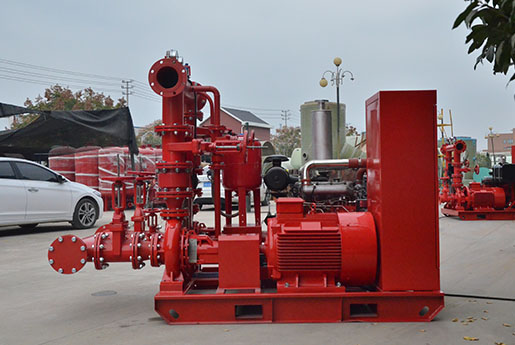Head of fire pump
The "head" of a fire pump refers to the pressure or force that the pump can generate to move water through a fire protection system. The head of a fire pump is typically measured in feet (or meters) and represents the vertical distance from the pump's discharge outlet to the highest point in the fire protection system where water needs to be delivered. It is a critical factor in determining whether the fire pump can provide sufficient pressure to meet the system's requirements.
The head of a fire pump is composed of two main components:
-
Static Head: This component represents the vertical distance from the pump's discharge outlet to the highest point in the fire protection system, typically the highest sprinkler head or the top of the standpipe. It accounts for the pressure required to lift water to the highest point in the system when there is no flow.
-
Residual Head: This component represents the pressure required to overcome friction loss and deliver water through the pipes, fittings, and devices in the fire protection system. It accounts for the pressure needed to maintain flow at a given rate.
The total head (H) of a fire pump is calculated by adding the static head (HS) and the residual head (HR):
H = HS + HR
To ensure that a fire pump can meet the system's requirements, it's essential to calculate the total head accurately during the system design phase. The fire protection engineer or designer must consider factors such as pipe size, length, and material, as well as the flow rate and any additional pressure requirements for specialized devices like hose connections, standpipes, or fire hydrants.
The fire pump selected for the system must have a rated head that is equal to or greater than the calculated total head to ensure that it can provide the required pressure to operate the sprinklers, standpipes, or other firefighting equipment effectively.
It's important to note that the specific requirements for fire pump heads can vary depending on local building codes, NFPA standards, and the unique characteristics of the building or facility being protected. Therefore, it's crucial to work with a qualified fire protection engineer or consultant to determine the appropriate head for your fire pump system based on the specific design criteria and local regulations.


.png)
.png)

.png)


